Dogs and Babies – When Two Worlds Collide
Dogs and babies sure make for the cutest pictures when they are together, but things aren’t as straightforward when you step inside the photograph.
I’ve been training dogs for a long time, and I’ve also raised a child alongside two bouncy German Shepherds. So I’m confident I can help you to safely and happily navigate this surprisingly contentious next step in your journey.
 Dogs and Babies
Dogs and Babies
If you’re starting to worry about what might happen with your dog when you introduce a new family member, you’re already doing a great job as a soon-to-be-parent. The news tends to scare parents with headlines about children being mauled by dogs or a baby injured by the family pet. It’s a horrific scenario that none of us hopes to find ourselves in.
Unfortunately, alarmist news reports may skew reality, so let’s hone in on statistics to paint a clearer picture of the dangers of bringing a child into a home with dogs. According to the Centers for Disease Control and Prevention (CDC), dog bites requiring medical treatment in infants could be as low as 0.04%. That being said, dog bites were the second-most cited reason for visits to the emergency room among children as reported in the Journal of the American Medical Association. The age group that is most-often the victim of dog bites: boys ages 5-9 year olds.
So yes, this is a serious situation that should be heeded, and you should continue to monitor the relationship between your pet and child for years to come.
Does it mean dogs and babies can’t grow together happily?
Absolutely not. Dogs bring immense joy to our lives, don’t they?
Babies aren’t exempt from experiencing that joy. In fact, babies can fall in love with their furry family members quickly. By the age of 1, a study confirmed that older infants showed a higher preference for their a live dog than for a mechanical dog. Babies in this same study also liked dogs more than cats! Take all the necessary precautions to avoid bad interactions between your dog and your new baby.
The Phases of Preparing For Dogs and Babies
There are three phases to consider:
- Prepare a dog for a baby months before the baby’s birth.
- Introduce the dog to the baby.
- Teach your growing child how to treat the dog.
How to Prepare a Dog for Baby
Train your dog well before the baby arrives. You can find several basic dog training guides here to get you started. Provide a comfortable resting place (like a crate or a bed in another room) your dog can go to get away from the baby
Desensitize your dog to being touched all over her body with varying degrees of pressure and noise levels. Desensitize your dog to interactions while she’s eating, including someone touching her food. Petting her while she’s eating or taking the food bowl away. Introduce your dog to the strange new sights, smells and sounds that come with a new baby. Let her see and smell some of the baby’s new clothes, toys, lotions and various feeding apparatus.
Leave a few items around the house and install the new furniture and toys several weeks in advance for your pooch to get used to. Gradually introduce periods of ignoring your dog while you pay more attention to a baby doll, another pet, or a friend’s child you could babysit. You’ll feel silly walking around your house carrying a baby doll while the dog trots along and paws at your ankles, but it will help you get an idea of how she’ll react to a real child.
Take your dog to a few places where children play such as a playground, school or a friend’s house who has children. The variety of noises, movement, and behaviors that come from children are all unique to the dog.
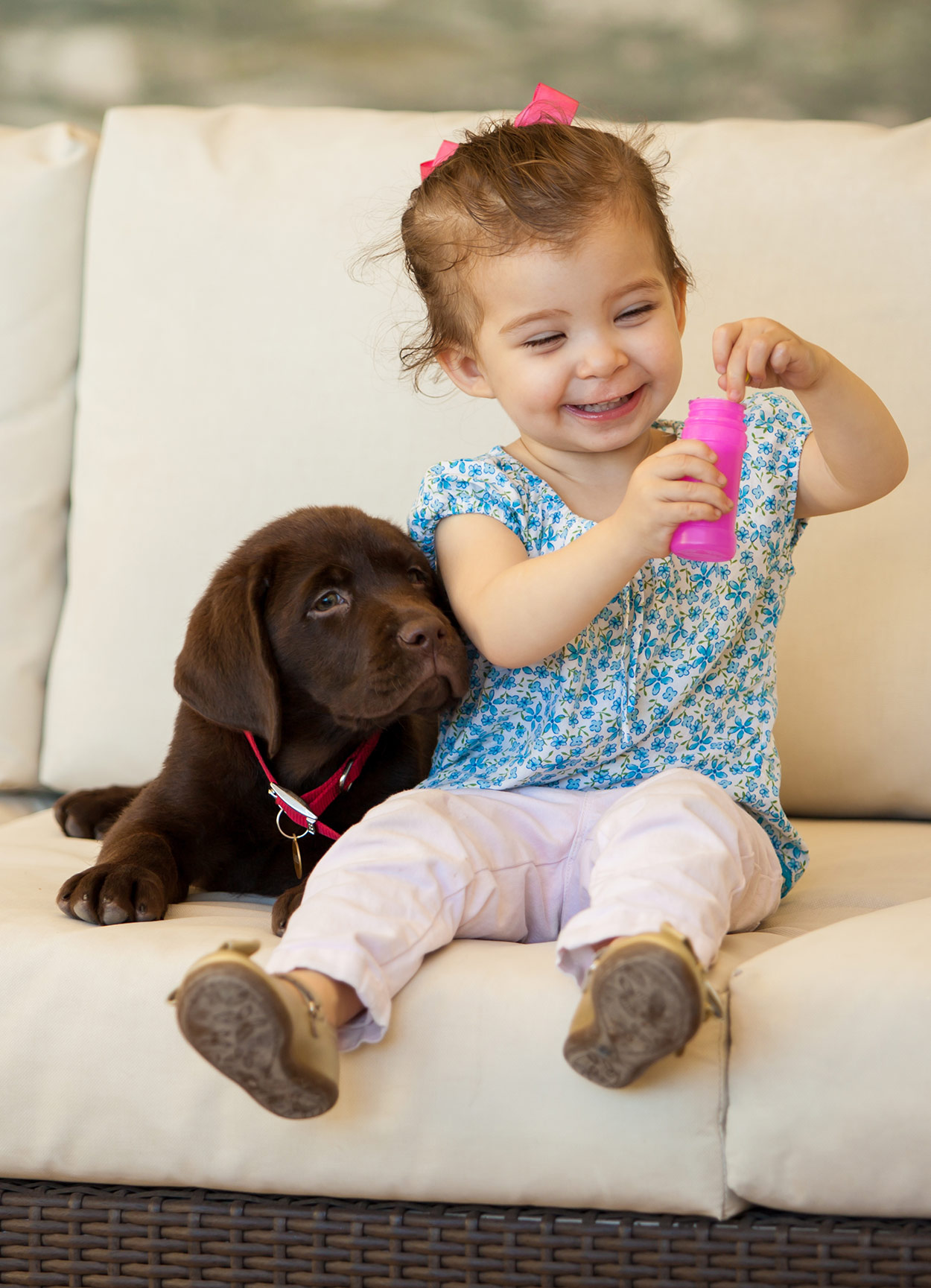
Introducing the Dog to a Baby
After the baby is born, have a partner bring home a blanket the newborn has been wrapped in, and leave it for your dog to sniff. I’ll never forget the photo my mom brought back to the hospital of my dog Lily lying on top of the baby’s birth blanket. My mom said, “She just took one sniff, curled up on top of it and hasn’t left it since.” It was as if it was already a familiar smell that Lily was excited to finally snuggle up with.
When you bring your new bundle home, take time to sit eye level with your dog, while holding the baby. (Have a partner on hand to intercede if there’s a problem.)
Dog Meets Baby for the First Time
Formally introducing the dog to a baby is key. Don’t be afraid or overly nervous. Your dog might react to your behavior accordingly. With every calm sniff or lick your dog offers the baby, offer calm praise. After just a minute or two, stand up and hand the baby over to your partner so you can really praise and snuggle your dog.
Repeat these little mini introductions a few times during the first few days so that your dog starts to associate the baby’s presence with calm and happiness.
Don’t yell or punish your dog around the baby
It’s important your dog doesn’t think every time you have the dog playing with the baby, the dog is going to get yelled at. So if your pooch just isn’t able to cope with calm interactions with the baby or being ignored by the dog owner, you should put your dog in a separate place while you’re feeding/playing with the baby.
Never leave your dog and baby alone together.
As well-trained or happy as your dog may be in general, it’s not OK to tempt fate. I cringe when I see photos of kids lying on their dogs or carrying them around under one arm. Parents might say, “Fifi will tolerate anything with those kids.” Things can change in a heartbeat. Toleration can only last so long before a dog playing with the baby might snap.
Teaching Children How to Treat Dogs
We take for granted our fluffy friends and forget that there are certain canine behaviors that just don’t go hand-in-hand with human play. Phase 3 of having dogs and children live together is to teach your children how to treat dogs. Make sure they know not to play with Fido when he’s eating, not to pull a toy directly out of his mouth, or to pull his tail and ears.
Did you know children don’t have full control of their grip either. Most zoos require children to pet demonstration animals with two fingers extended, rubbing down the animal’s back. When young children pet animals with an open hand, there is a chance that they will inadvertently grab or pinch the animal.
A surprised or hurt animal is an animal that will potentially bite. This goes for your family pets too, so teach your children how to appropriately pet your pets calmly and gently. Now let’s look at some additional FAQs about dogs and babies
Signs Dog is Jealous of Baby
If your dog starts behaving differently – or worse, aggressively – after the changes around the house, you might think they are signs Dog is jealous of Baby. Now that your dog’s whole home life has been changed, keep an eye on problematic dog behavior with new Baby, such as if your dog:
- Stops eating or only eats when no one is around
- Slinks out of the room any time your child enters
- Growls or snaps at your child
What to do if my dog growls at Baby?
Dogs usually give plenty of clues that they’re uncomfortable – ears lying down, averting or darting their eyes, panting, physically trying to move away, lip curling, and growling. As soon as you see any of these warning signs from your dog that he’s getting uncomfortable, split the dog and baby up.
Your job as the parent is to ALWAYS pay attention to your dog’s state of mind. You should learn to interrupt before the dog ever reaches a point of growling. Either carry the baby out of the room or ask your dog to go to his quiet place.
Once your child is old enough, it’s important to tell him when it’s time to walk away from Rover. Rover shouldn’t always be the one removed, and your child needs to learn when to leave an animal alone. It’s always a good idea to consult a veterinarian, certified dog behaviorist and/or certified trainer if your dog starts showing any signs of aggression.
What about my newborn baby and dog hair?
Is dog hair bad for babies? There’s no one-size-fits-all answer to this question. BUT there is some really interesting research that is worth considering. Evidence suggests having dogs around babies might boost their immune system over all.
On study reviewed by Pediatrics magazine revealed that children exposed weekly to dogs in the first year of their life had fewer respiratory and ear infections than those who weren’t. Another study demonstrated that children with pet dogs in the home had fewer colds, too.
HOWEVER, there are heritable illnesses like allergies or asthma that are made significantly worse for children when exposed to dog hair/dander. It’s important to point out that the study specifically referred to kids who were RAISED with dogs within the first year of their life, not adding a dog later on.
What about big dogs and babies?
Large dogs might get a bad rap for being more dangerous around babies than smaller breeds, but let’s look back at those statistics from the CDC. Bites from dogs are just as common among small breeds as large breeds. Dachshunds, West Highland Terriers, and Cocker Spaniels are all on the top of the offenders list alongside Labradors, Golden Retrievers, German Shepherds and pit bulls.
You must consider that a larger dog can potentially do more physical damage due to its size alone. But you also have to consider that a small dog like a Pomeranian has a mouth right at a toddler’s eye level, so its first strike could deliver significant damage to the child’s face.
Are certain breeds of dogs good with babies?
Have you seen those heart-warming videos online of dogs taking care of babies or a dog guarding Baby? Wondering if there are certain dogs that are naturally better around children? My husband grew up with a huge Newfoundland, a breed dubbed “Nature’s Nannies” for being incredibly gentle and protective over children.
On the other hand, my parents would get sideways glances from people when they said they bred Dalmatians in the house with us five kids. Apparently, Dalmatians had a bad reputation for a long time for being aggressive toward children. My parents never had any problems, and in fact had many stories of how the dogs would come stand between us kids and visitors to our home.
My two year old son was brought into a house with two German Shepherds. Lily, my older dog, had to be separated regularly from him. She was never socialized properly around children, and would quickly become uncomfortable with a squealing toddler. She may have been one of the best-trained dogs in the city, but even she would snap at a kid.
On the other hand, our younger German Shepherd, Luca, got lots of socialization coming with me to work for years before our son came into the picture. He gets a kick out of our toddler, and is one of those dogs that will not show any signs of stress when my little guy inadvertently gets a fistful of tail fur in his sticky fingers (before I catch him – even the most vigilant parents can’t be there 24/7 to prevent accidents, can we?)
Everyone has an anecdote about their perfect childhood dog, but the truth is that there’s really no scientifically-supported breed choice for baby friendly dogs. The best dogs around babies are those that are well-trained, calm, and well socialized.
What About Dog Sleeping with Baby?
Dogs and babies sharing a bed is a strict NO-NO from me. Need we refer back to the dog bite statistics regarding the occurrence of bites when children were unsupervised? The number of bites that happen with familiar pets? Not to mention the potential of a large dog with long fur inadvertently rolling over and smothering or choking a sleeping child. I personally can’t even be trusted not to smack my husband in the face in the middle of a dream, so just don’t take that risk with Dog sleeping with Baby.
Dogs and Babies Safety
Let’s be optimistic that if you follow the cautions for dogs meeting babies laid out in the article, you’ll have no problems bringing Baby home to Dog. Unfortunately, every dog, child, and household is different. It’s important for you to try out these various tips as well as stay educated, and get help when you need it. There’s no substitute for professional help, and there is no substitute for dogs’ and babies’ safety.
Liz London is a certified dog trainer through the Certifying Council of Professional Dog Trainers (CPDT-KA) & the Karen Pryor Academy (Dog Trainer Foundations Certification) with regular continuing education courses from the top animal trainers from all over the world, including Michele Pouliot, director of training for the Guide Dogs for the Blind. She has trained zoo animals, search & rescue canines, gundogs, and helped people raise happy, healthy, and well-behaved canine companions for over ten years.
Resources
- Incidence of Dog Bite Injuries Treated in Emergency Departments. JAMA. 1998
- Reactions of Infants and Toddlers to Live and Toy Animals. Psychological Reports. 1987.
- Respiratory Tract Illnesses During the First Year of Life: Effect of Dog and Cat Contacts. Pediatrics. 2012.
- Factors associated with acute respiratory illness in day care children. Scand J Infect Dis. 2010
- Developing motor planning over ages. Journal of Experimental Child Psychology. 2010
- CDC Childhood Injuries Report: Patterns of Unintentional Injuries Among 0 – 19 Year Olds in the United States, 2000 – 2006. Centers for Disease Control and Prevention. 2008.
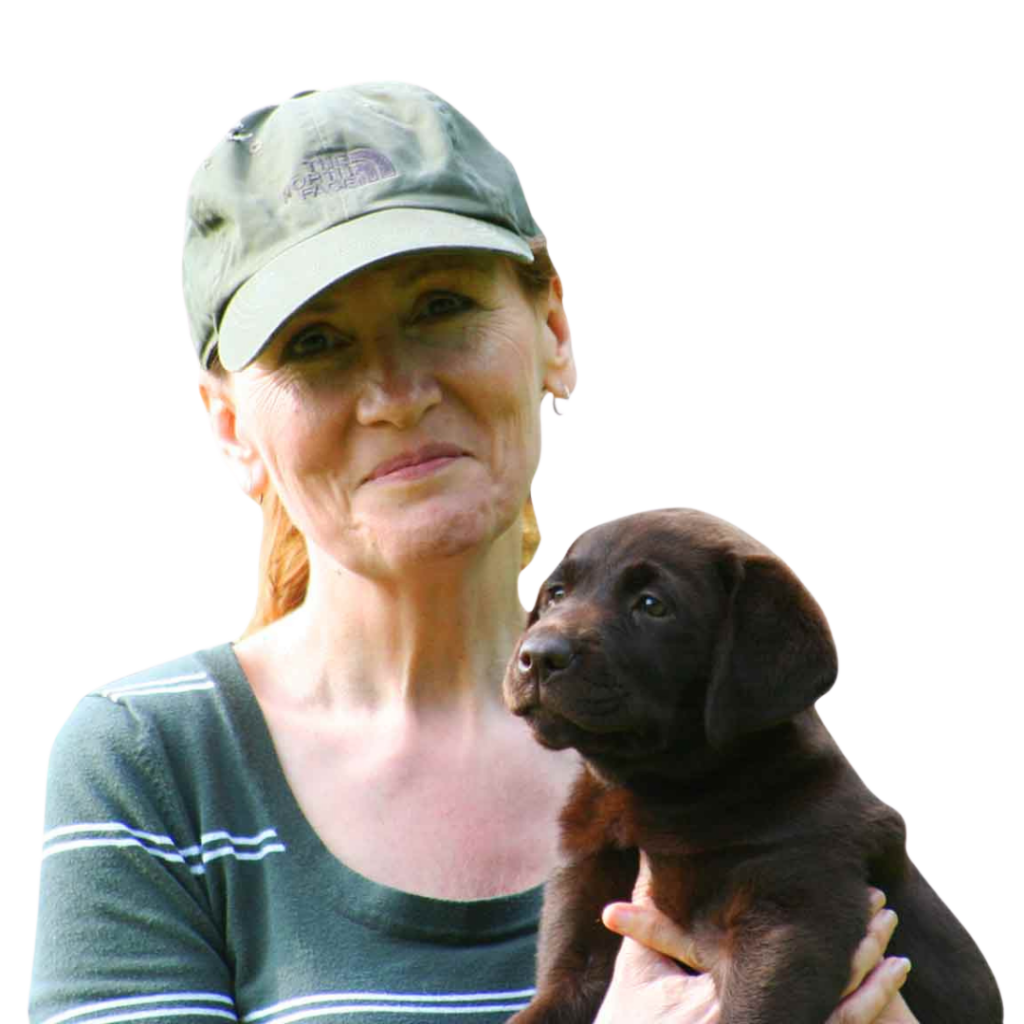
Free Labrador Updates!
Get my training tips, news, reviews, and the latest from The Labrador Site delivered to your inbox
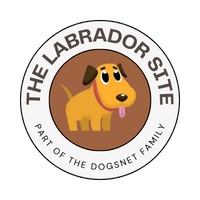
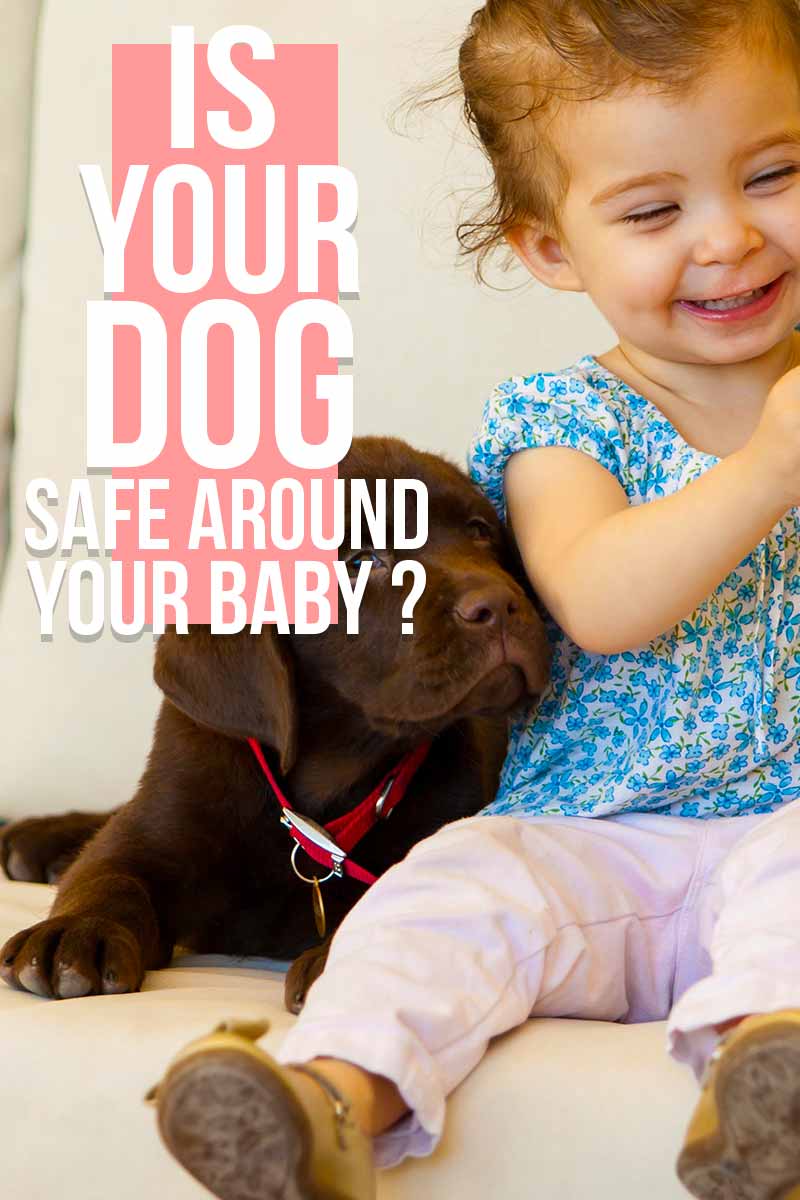 Dogs and Babies
Dogs and Babies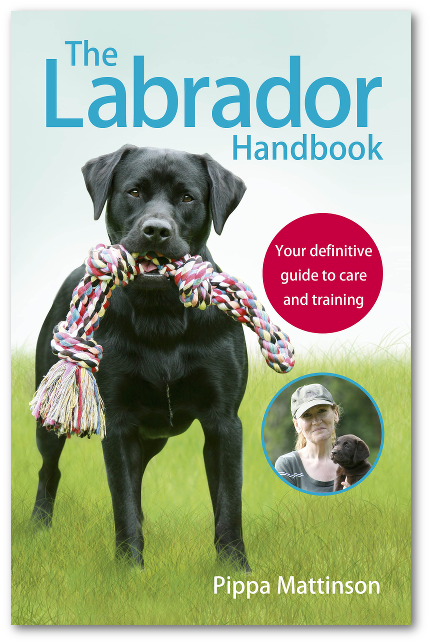

Hi Liz!
Such a tough topic. I too miss those long hikes with the pups.
Our dogs were our fur babies before our human baby was born. It was tough when the baby was a newborn but now that he’s older and sturdier, watching their relationship blossom is amazing!! He loves petting the dogs and they let him climb all over them.